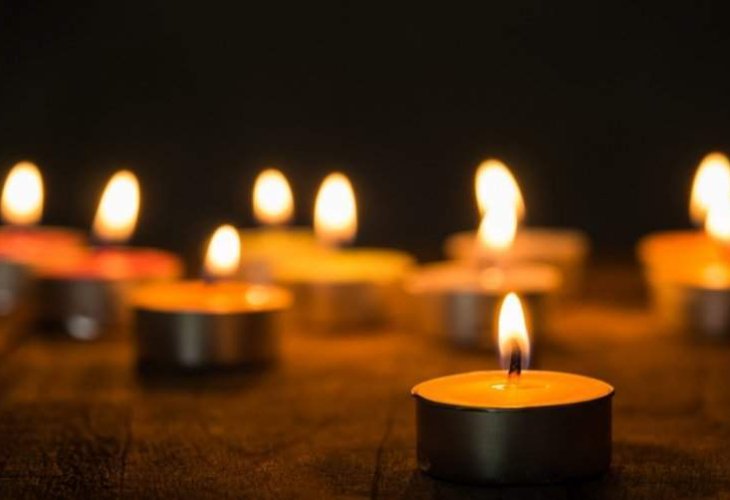Jewish Law
Prayer at the Burial Sites of the Righteous: A Guide to Kivrei Tzaddikim
Why do Jews pray at the gravesites of their great ancestors? What form do such prayers take? Who are the prayers directed to?
 (Photo: shutterstock)
(Photo: shutterstock)Visiting the kivrei tzaddikim (the graves of righteous people) is a time-honored practice grounded in Torah law and reflected in Talmudic teachings and Jewish mysticism. The purpose is not to pray to the dead, but to seek God’s mercy in the merit of these holy people and to ask that they intercede on our behalf before God.
This article explains the basis for the custom, the halachic limits that ensure it remains proper, and practical guidance on how to visit such graves in a respectful and Torah-true manner.
Why Do Jews Visit the Graves of Tzaddikim?
The Zohar HaKadosh, the central work of Jewish mysticism (Kabbalah), teaches that the Jewish People should visit the graves of the righteous in a spirit of repentance and with a broken heart, so that the holy souls will plead for mercy on their behalf before God. This is considered more powerful than having living tzaddikim pray for Divine mercy, and the prime example of this is Moshe Rabbeinu.
The Talmud (Sotah 14a) asks why Moshe’s burial site was kept secret forever. After all, during his lifetime, Moshe repeatedly begged God to forgive the Jewish People for their failings and was successful in doing so. But now, after his death, no prayers are possible at his gravesite as no one knows where it lies.
The answer the Sages give is based precisely on Moshe’s track record for successfully interceding for his people. God knew that in the future, the Beit Hamikdash (Holy Temple) would be destroyed and the Jewish People would be exiled from the Holy Land. In such dire circumstances, they would be naturally drawn to pray at Moshe’s burial site to beg for Divine mercy — and Moshe’s ability to intercede with God, now enhanced by the fact of his no longer being alive — would all but ensure that the Divine decree would be overturned.
This could not be, as the Exile was essential in order to preserve the Jewish People’s existence. Therefore, prayer at Moshe’s burial site had to be made completely impossible. And so it was.
Prayer in Hebron During Biblical Times
One of the earliest references in Jewish sources to the practice of praying at the gravesites of righteous people is in the Chumash (Bamidbar 13:22). After the Jewish People left Egypt, after the giving of the Torah on Mount Sinai, twelve spies were sent into Eretz Yisrael to scout out the land. These were all men of great distinction but ten of them would ultimately give a negative report of the Land of Israel.
One of the remaining two was Calev ben Yefuneh and while traveling through the Land of Israel during the scouting mission, he detoured to Hevron, where the Avot and Imahot (Patriarchs and Matriarchs) are buried, to pray at their tombs:
“My fathers, seek mercy for me that I may be saved from the counsel of the spies.”
The form of Calev’s prayer shows the correct way in which to pray at the graves of the righteous. He did not pray to the Avot and Imahot; rather, he asked for them to pray to God on his behalf, that he might have the fortitude to resist being swept along with the other ten spies in their negative report of the Land of Israel.
Only God Answers Prayers
God is the only power in the universe and all prayers are directed only toward Him. This is one of the foundational principles of the Torah. The Torah also specifically prohibits what is called “inquiring of the dead” (Devarim 18:11), which means trying to communicate with those who have passed away, or asking favors of them, as if they have independent power. They do not.
Therefore, when visiting a grave, we must not pray to the departed person, even if they were incredibly righteous. All we may do is ask for their soul to approach God on our behalf.
As with all personal prayer, there is no set formula for prayers at the burial site of a tzaddik. We can use our own words.
The Reason for Lighting Candles at Graves
Aside from praying at the grave of a tzaddik, it is customary to light a candle and state that it is for the benefit of the departed soul.
Lighting a candle also draws down spiritual illumination from the departed soul, referred to as an “imprint.” This helps to channel the prayers recited there to the spiritual realms.
How to Visit Kivrei Tzaddikim
- Approach with humility and a contrite heart.
- Pray only to Hashem, not to the tzaddik.
- Invoke the tzaddik’s merit and ask Hashem to take it into consideration and have mercy.
- Avoid any language suggesting the tzaddik has power independent of God.
- Light a candle respectfully, stating that it is for the elevation of the tzaddik’s soul.

